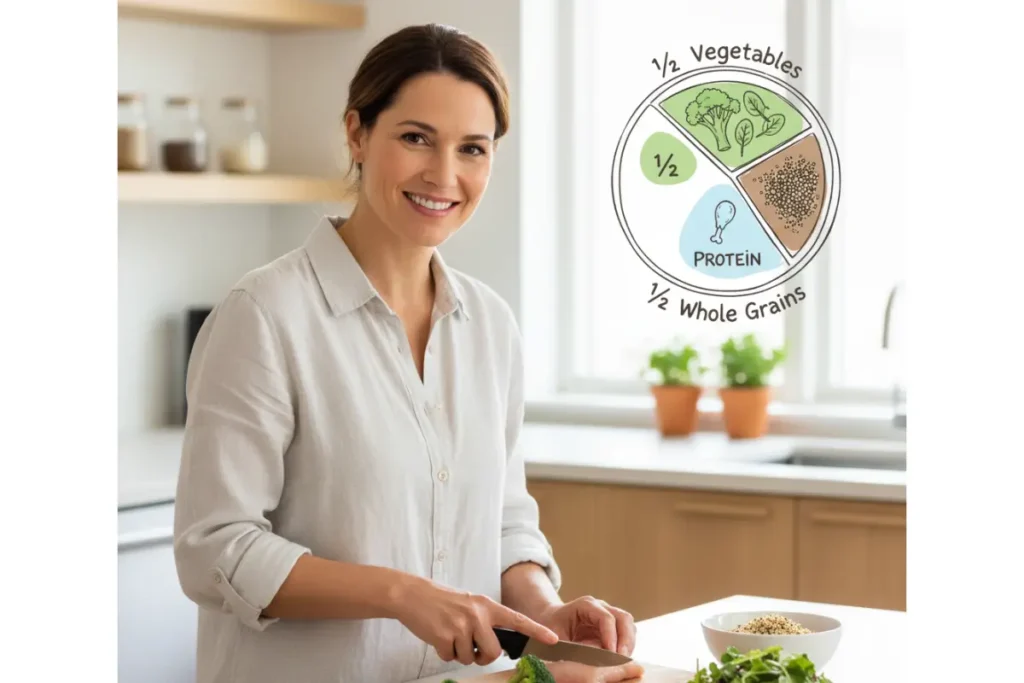
If you’ve been searching for a diet plan for women over 40, chances are you’ve noticed that what used to work in your 20s or 30s doesn’t feel the same anymore. Maybe the scale won’t budge, your energy dips in the afternoon, or belly fat seems to stick around no matter what you try. You’re not alone — these are some of the most common struggles women face as their bodies change after 40.
Here’s the good news: losing weight and feeling good again isn’t about starving yourself or chasing trendy quick fixes. It’s about learning how your body works now — slower metabolism, shifting hormones, different nutrient needs — and adjusting your meals and habits in a way that feels realistic.
In this guide, I’ll walk you through everything you need: the core principles of a healthy diet for women over 40, a sample 7-day meal plan, the best foods to eat (and which ones to limit), plus simple lifestyle habits that make all the difference. By the end, you’ll have a practical roadmap you can follow to lose weight, protect your health, and feel stronger in this stage of life.
Why Dieting After 40 is Difficult.
Turning 40 often feels like flipping a switch when it comes to weight and energy. You might be eating the same way you always have, but suddenly the results are different — slower, harder, more frustrating. That’s because your body is going through real changes that affect how food is used, stored, and burned.
The Metabolism Shift After 40
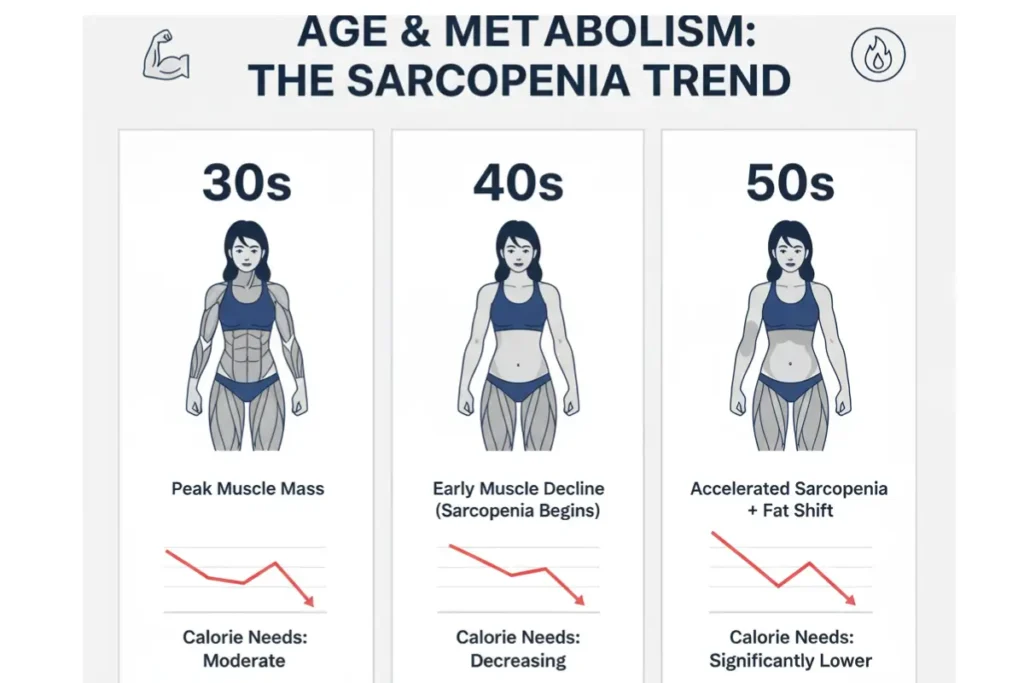
One of the biggest changes is a metabolism slowdown after 40. Your body naturally burns fewer calories than before, partly because of sarcopenia — muscle loss with age. Muscle is like your body’s built-in calorie burner, so when it decreases, fat gain becomes easier even if your eating habits haven’t changed.
The Role of Hormones in Weight Management
Hormones also play a huge role. Many women notice perimenopause and weight gain long before menopause actually starts. Shifting estrogen and progesterone levels can trigger cravings, poor sleep, and stubborn belly fat. By the time menopause arrives, many struggle with menopause belly fat that feels out of their control. This isn’t about willpower — it’s about how hormones shape where and how your body stores fat.
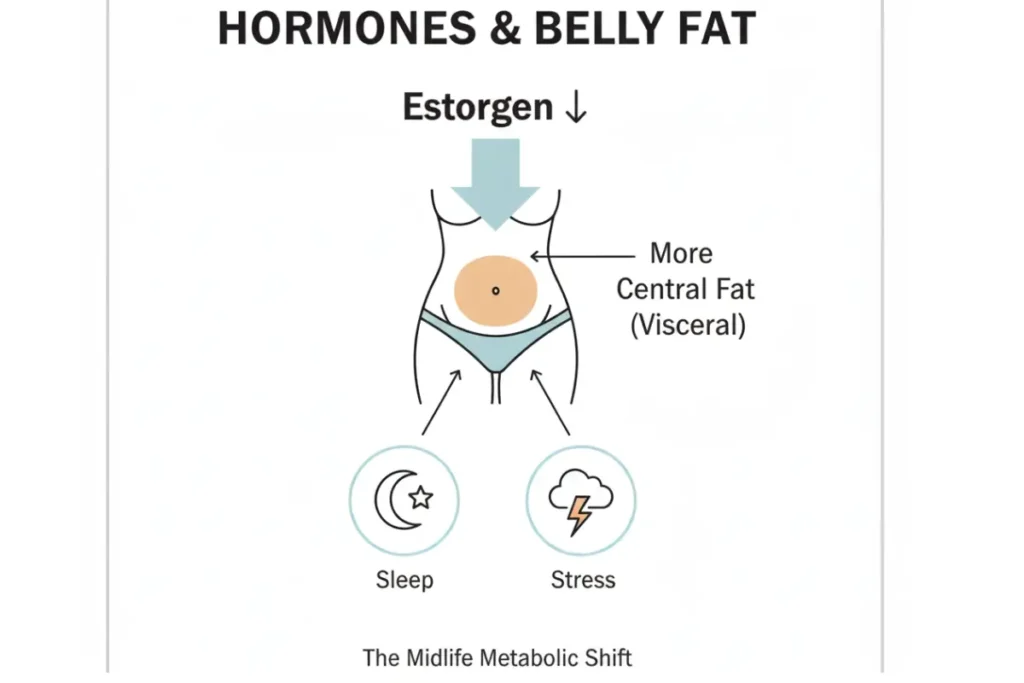
Common Nutritional Deficiencies
Hormones aren’t the only factor. Hormonal imbalance and weight challenges are often made worse by hidden deficiencies. With estrogen decline and metabolism changes, your body absorbs nutrients differently. Calcium, vitamin D, and B-12 can all run low, which affects energy, bone health, and mood. And for some women, thyroid health and weight loss after 40 become linked, since even small changes in thyroid hormones can make weight management much harder.
Core Principles of a Healthy Diet Plan
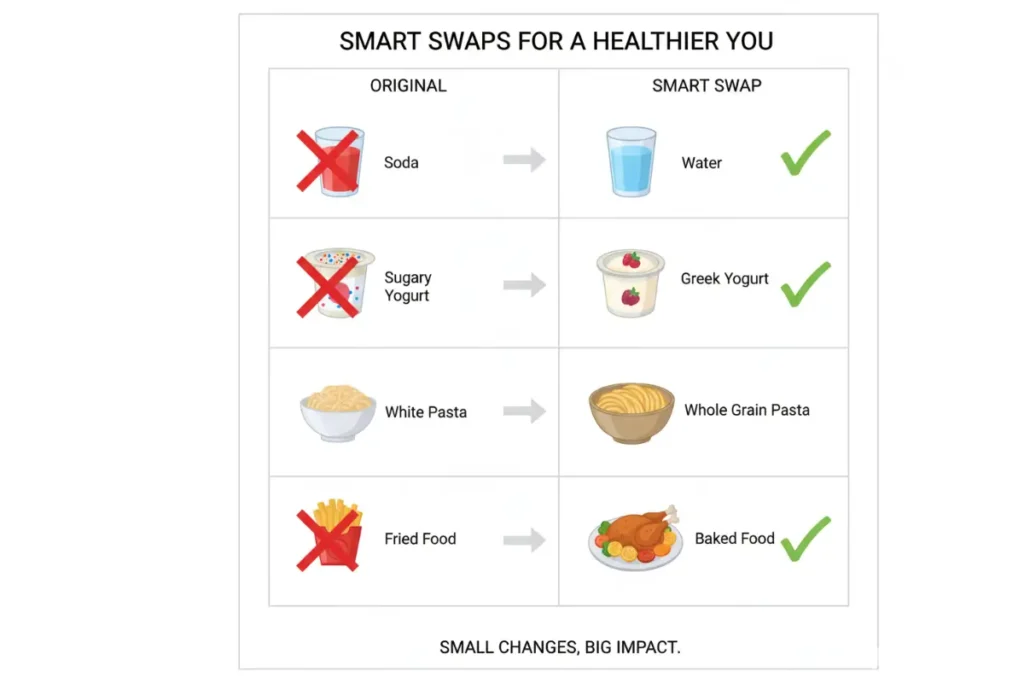
When it comes to eating after 40, the goal isn’t to jump on the next trendy diet , it’s to build a way of eating that supports your body’s new needs. Here are the simple, science-backed basics that work for most women in midlife.
Focus on Whole Foods, Not Processed Packaged Foods
The easiest way to improve your diet is to stick with foods as close to their natural form as possible. Fresh fruits, vegetables, lean proteins, nuts, and whole grains give your body real fuel and keep your digestion steady. Highly processed foods, on the other hand, are often loaded with sugars, additives, and empty calories that trigger cravings and make weight loss harder.
The Importance of Protein for Strength & Satiety
A high-protein diet for women over 40 is one of the most powerful tools for staying strong and managing weight. Protein supports muscle maintenance (so metabolism doesn’t drop as quickly), keeps you full for longer, and helps prevent overeating. Aim for lean sources like chicken, fish, Greek yoghurt, beans, or lentils at every meal.
Choosing the Right Carbohydrates, Fats & Fibre
Not all carbs and fats are created equal. The best carbs for energy and fat loss are those rich in fibre — whole grains, beans, fruits, and vegetables — because they release energy slowly and keep blood sugar steady. Pair these with healthy fats for hormone balance, like avocados, olive oil, nuts, and salmon. Together, this combo not only fuels you but also supports smoother gut health and digestion after 40.
Don’t forget about micronutrients. Calcium and vitamin D for bone health become non-negotiable after 40, helping protect against bone loss. An anti-inflammatory diet for women — rich in colourful veggies, omega-3s, and herbs like turmeric — can also ease joint pain and support long-term health.
A Sample 7-Day Diet
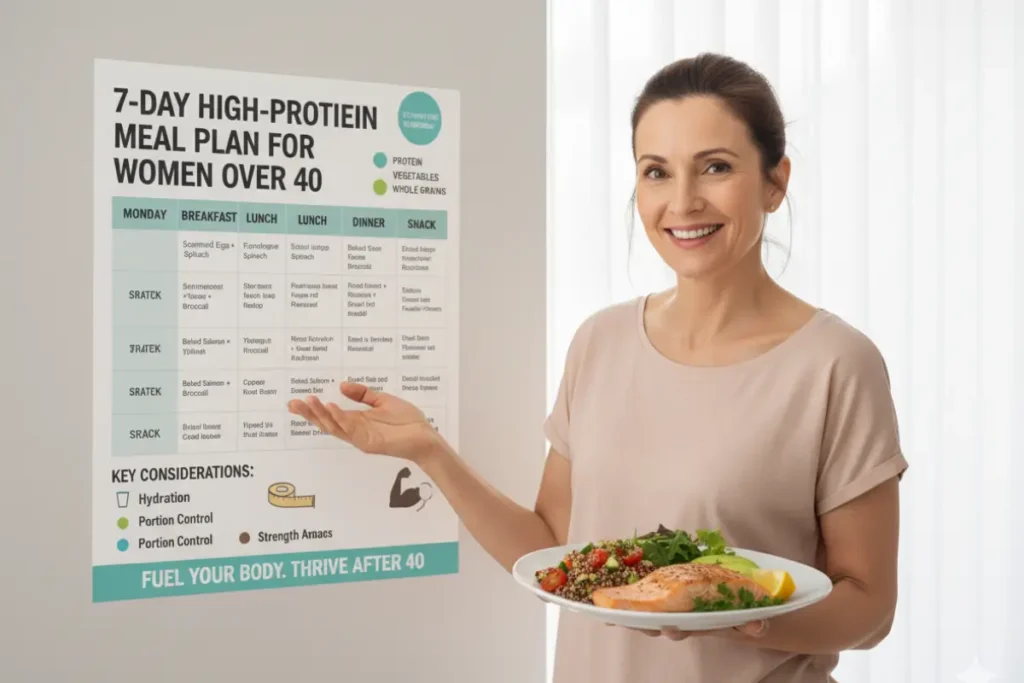
Sometimes it helps to stop overthinking and see what a balanced meal plan for women 40+ looks like in real life. Below is a simple and flexible guide that balances protein, healthy carbohydrates, and fats — while keeping portions realistic. Think of it as a starting point, not a rigid rulebook.
Day 1–3: Balanced Meals & Smart Snacks
- Breakfast: A healthy breakfast for women over 40 could be Greek yoghurt with berries and chia seeds. It’s rich in protein and fibre, helping you stay full until lunch.
- Lunch: Grilled chicken salad with olive oil and quinoa. Simple, filling, and easy to prep ahead.
- Dinner: Baked salmon with roasted veggies and brown rice — very close to a Mediterranean diet meal plan over 40 style.
- Snack: Apple slices with almond butter, or a small handful of nuts, as a low-sugar snack for women.
Day 4–7: Meals, Snacks & Practical Adjustments
Tips for Meal Prepping & Portion Control
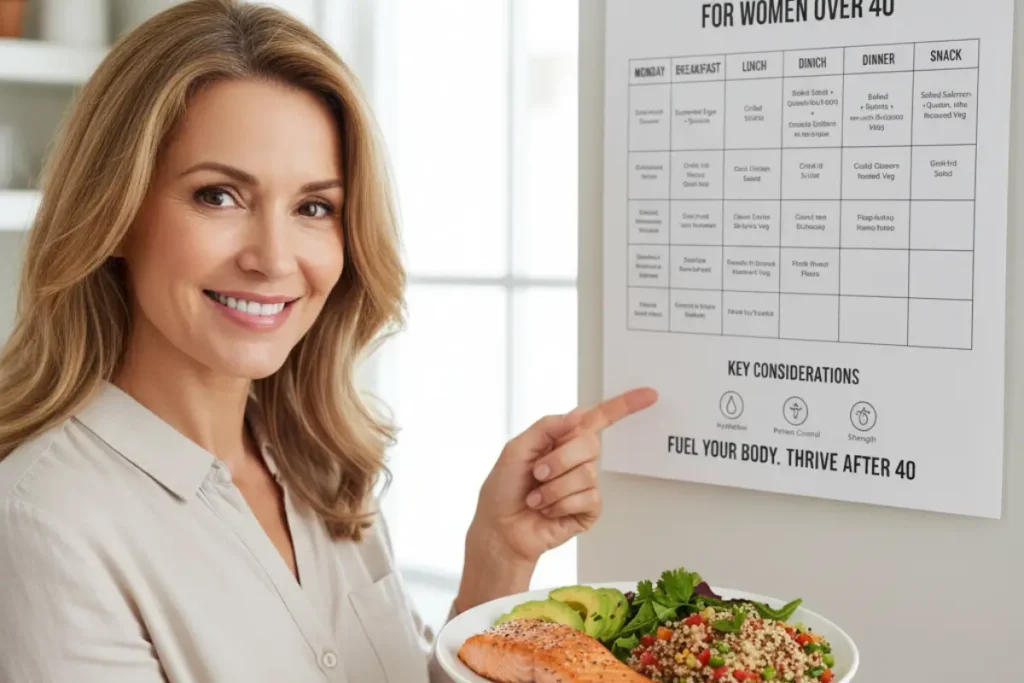
- Use portion control for weight loss: half your plate veggies, a palm-sized portion of protein, and a fist-sized portion of carbs.
- Try easy meal prep for busy women by cooking proteins (like chicken or beans) in bulk and mixing them into salads, wraps, or grain bowls throughout the week.
- Keep snacks simple: fruit, nuts, boiled eggs, or veggie sticks. If it takes less than 2 minutes to grab, you’ll actually eat it.
Best Foods to Eat (and Which Ones to Limit)
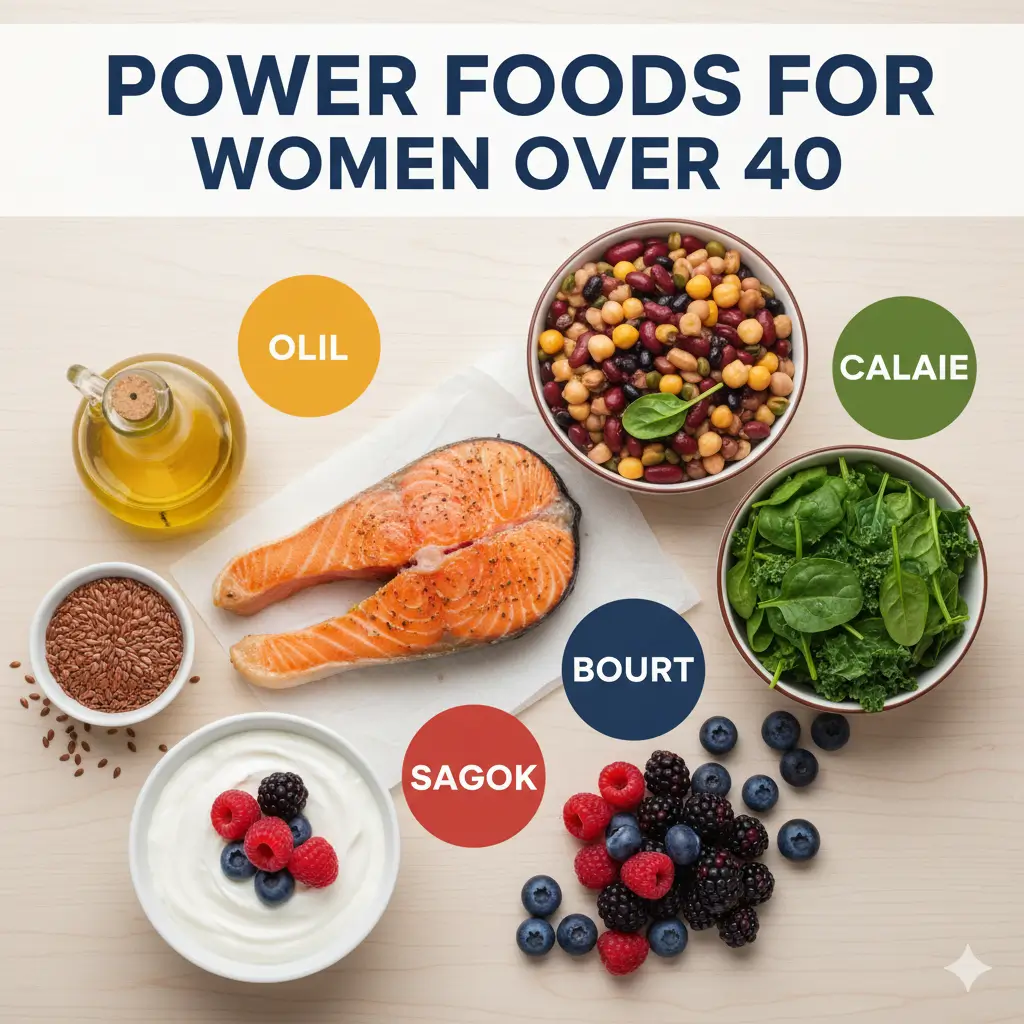
Not all foods are created equal — especially when you’re over 40. The right choices can help your body burn energy better, balance hormones, and keep you feeling full, while the wrong ones can lead to stubborn weight gain, low energy, or even digestive issues. Here’s a simple breakdown.
Power Foods That Boost Energy & Metabolism
Think of these as superfoods for women over 40 — everyday items that support energy, immunity, and fat-burning. Lean proteins, leafy greens, whole grains, and legumes are all solid staples. Add foods that boost metabolism, such as green tea, chilli peppers, and high-protein snacks, to give your body a natural edge.
Foods That Help Balance Hormones
What you eat directly affects your hormone health. Hormone-balancing foods like flaxseeds, soy, and chickpeas provide natural plant estrogens that can ease hot flashes and mood swings. Cruciferous vegetables and estrogen are also closely linked — broccoli, cauliflower, and Brussels sprouts help your body process estrogen more effectively. Don’t forget omega-3-rich foods like salmon, walnuts, and chia seeds, which support brain, heart, and joint health.
Foods to Avoid or Reduce for Faster Results
On the flip side, some foods can work against your goals. Highly processed snacks, refined carbs, and sugary drinks spike blood sugar and make weight harder to manage. Some foods that cause bloating after 40, like carbonated drinks, fried foods, or too much salt, may leave you uncomfortable and discouraged. Alcohol and excess caffeine can also interfere with sleep and hormones, so keeping them in check is key.
Beyond Food — Lifestyle Habits That Maximise Results
Food is powerful, but what happens outside the kitchen can make or break your progress after 40. Your muscles, sleep, and stress levels all play a big role in how your body uses calories and stores fat. The good news? A few simple lifestyle tweaks can speed up results and make them last.
The Non-Negotiable Role of Strength Training
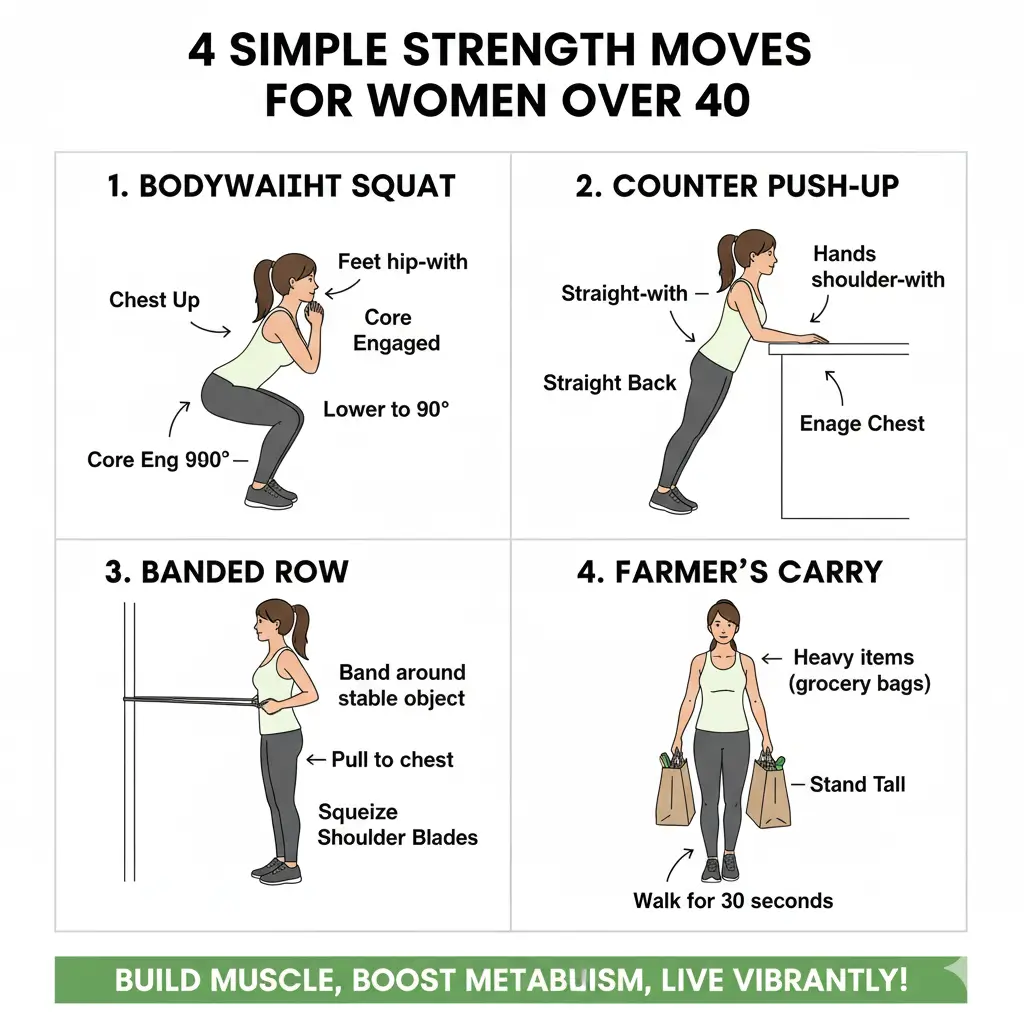
Cardio is great for your heart, but when it comes to metabolism, nothing beats muscle. Strength training for women over 40 is essential because it slows down muscle loss, which naturally happens with age. Even basic weight lifting and metabolism go hand in hand — more muscle means more calories burned, even at rest. Two to three sessions a week with bodyweight moves, dumbbells, or resistance bands can make a huge difference.
Why Sleep is Your Secret Weapon for Hormonal Balance
If you’ve ever wondered about the sleep and weight gain connection, you’re not imagining it. Poor sleep raises hunger hormones, lowers satiety hormones, and makes you crave sugary, high-calorie foods. Aiming for 7–8 hours of restful sleep doesn’t just recharge your brain — it helps balance estrogen, cortisol, and insulin, all of which affect belly fat.
Managing Stress for Better Hormonal Health
Stress doesn’t just feel bad — it leaves physical marks too. High stress can raise cortisol, often called the “belly fat hormone,” leading to what many women describe as stress and cortisol belly fat. You can’t erase stress, but you can manage it. Walking outdoors, meditation, yoga, or even journaling can all calm your system. For exercise, walking vs HIIT for women 40+ often comes up. The truth? Both can help — walking lowers stress while HIIT (done safely) can boost metabolism. The right mix depends on your energy and lifestyle.
Troubleshooting — Common Challenges & Smart Solutions
Even with the best plan, it’s normal to hit bumps along the way. The scale might stall, energy might dip, or health issues might get in the way. Instead of giving up, use these solutions to adjust and keep moving forward.
Breaking Through a Weight Loss Plateau
Hitting a weight loss plateau after 40 is common, and it doesn’t mean the plan isn’t working. Sometimes it’s just your body adapting. Try small changes: adjust portion sizes slightly, swap in more protein, or add an extra walk each day. Even tiny tweaks can restart progress.
Staying Motivated and Consistent
Motivation is tricky, especially in midlife when work, family, and stress all compete for your attention. Simple motivation tips for midlife women include setting small weekly goals, tracking non-scale victories (like energy or sleep), and finding a workout buddy for accountability. Remember — progress isn’t about being perfect; it’s about being consistent.
Adapting the Plan for Specific Conditions
For some women, underlying health issues make weight loss harder. If you’re dealing with thyroid problems, following a hypothyroidism diet plan — with iodine-rich foods, selenium, and balanced carbs — can help support your thyroid. Women with blood sugar concerns may benefit from an insulin resistance diet plan focused on low-glycemic carbs and steady protein. And for those struggling with menopause weight gain solutions, pairing hormone-friendly foods with strength training often works better than strict calorie cutting.
The Bigger Picture — Diet and Long-Term Health After 40
Eating well in your 40s isn’t just about fitting into jeans — it’s about protecting your future health. A balanced diet now can lower the risk of heart disease, reduce the chance of developing type 2 diabetes, and support stronger bones and muscles as you age.
What Studies Show About Diet and Health After 40
Many studies show that women who focus on whole, healthy foods and steady eating patterns have lower rates of cardiovascular disease and obesity later in life. Cutting back on added sugar and processed meat while increasing fiber, lean protein sources, and fruits and vegetables improves both weight management and long-term health.
Building Smarter Eating Habits
Working with a registered dietitian can help you choose the right food groups and design eating habits that last. Small daily swaps — like replacing soda with water, choosing Greek yoghurt instead of flavoured desserts, or adding beans as a plant-based protein — make a big difference over time. The goal is not short-term dieting but sustainable food choices you can carry for years.
Strength, Movement, and Health Conditions
Food is only part of the story. Women who’ve lifted weights regularly in their 40s and beyond show stronger muscles and fewer health risks as they age. For anyone with a health condition like high cholesterol, thyroid issues, or blood sugar problems, combining diet with exercise can be life-changing. Pairing strength training with a balanced diet keeps metabolism active and lowers your risk for cardiovascular disease and type 2 diabetes.
FAQs: Diet Plan for Women Over 40
What is the fastest way for a 40-year-old woman to lose weight?
The safest “fast” approach is steady, sustainable loss (about 1–2 lb per week). Focus on protein at every meal, whole foods over processed snacks, and cut added sugar/refined carbs. Pair this with 2–3 days of strength training and daily light movement (walking). This preserves muscle, keeps you full, and avoids rebound weight gain.
- Prioritize lean protein (eggs, fish, chicken, Greek yogurt, tofu, beans).
- Fill half your plate with veggies; use whole-grain or bean-based carbs.
- Sleep 7–8 hours; manage stress to keep cravings in check.
How can I kick my metabolism up after 40?
Build and protect muscle with resistance training 2–3 times weekly, eat enough protein (spread across meals), stay active between workouts (steps, standing, stretching), hydrate, and get quality sleep. These habits counter the natural slowdown after 40.
- Target ~0.7–1.0 g protein per lb body weight daily.
- Mix lifts for legs, back, chest, core; progress gradually.
- Keep a consistent bedtime and morning light exposure.
How do women over 40 lose belly fat?
Combine balanced meals (protein + fiber + healthy fats) with portion control, limit alcohol and ultra-processed foods, manage stress, and pair walking with strength work. Hormonal shifts (lower estrogen, higher cortisol) and muscle loss make belly fat stubborn—consistency is key.
- Meals: protein, colorful veg, whole-grain/bean carbs, olive oil/avocado/nuts.
- Training: 2–3 strength sessions + regular walks; optional short intervals if recovered.
- Stress & sleep: mindfulness, evening wind-down, 7–8 hours nightly.
What is menopause belly?
“Menopause belly” is midsection fat gain linked to estrogen decline, slower metabolism, sleep changes, and stress. It’s manageable with hormone-friendly foods (omega-3s, cruciferous veg, fiber), strength training, steady sleep, and alcohol moderation.
- Favor salmon, walnuts, flax, soy foods; broccoli, Brussels sprouts, kale.
- Limit sugary drinks, refined snacks, and excess alcohol.
How much protein should I eat to lose weight?
A simple target for women over 40 is ~0.7–1.0 grams of protein per pound of body weight per day, divided across meals. Example: 150 lb → 105–150 g/day. Protein supports fullness and preserves muscle, which helps metabolism.
- Breakfast ideas: eggs, Greek yogurt, cottage cheese, tofu scramble.
- Lunch/dinner: chicken, fish, turkey, tempeh, lentils, bean-based pastas.
Why is it so hard to lose weight after 40?
Metabolism slows, hormones shift (perimenopause/menopause), and muscle naturally declines (sarcopenia). Busy schedules, stress, poor sleep, and conditions like thyroid issues or insulin resistance can add friction. The fix: protein-forward meals, regular strength training, daily steps, better sleep, and steady stress management—not extreme diets.
Conclusion: Your Next Step Toward a Healthier You
Following a diet plan for women over 40 isn’t about strict rules or chasing quick fixes. It’s about understanding the changes your body is going through — slower metabolism, shifting hormones, new nutrient needs — and making gentle adjustments that work for your real life.
Start simple. Choose healthier foods, cut back on added sugar, and aim for steady eating habits that support your energy and long-term health. Pair those choices with movement — even short walks or a couple of sessions where you’ve lifted weights — and you’ll notice how much stronger and more in control you feel.
Remember, there’s no “perfect plan.” What matters is progress and consistency. Every smart choice — swapping soda for water, reaching for Greek yoghurt instead of a sugary snack, or filling your plate with vegetables — adds up. Over time, these choices lower your risk of heart disease, help prevent type 2 diabetes, and keep you feeling vibrant through your 40s and beyond.
If you’re ready to take the next step, try the 7-day sample meal plan included in this guide as your starting point. Use it, tweak it, and make it yours. The most important part is that you begin — because your health, energy, and confidence are worth it.